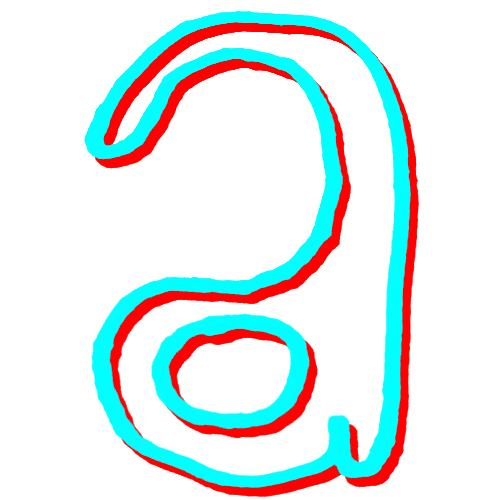“alive to such work”: On Emily Wilson’s “Nocturne”
It is a much more ambiguous space, more disorientating, as one thinks one is looking up out of an enclosed world into deep space and yet it is not quite right.
—Susan Derges, photographer
Emily Wilson’s poetry evokes the endlessly metamorphic motions of botanical and geological matter, the aesthetic beauty and surprise of natural textures and phenomena: lichen, slabs of ice, hedges. Her surfaces are lavishly ornamented, exquisite, like a garden or the bright palettes of medieval painting. These thickly textural layers of description move through sensory apprehension toward more elusive questions of proximity and distance, overlaying elements to create luminous imprints of an ecological surround. It’s an intricate and vertiginous ecopoetics, elaborating description as a linguistic precision that destabilizes, opening out onto stranger landscapes, vaster scales.
“Nocturne,” from her third book, The Great Medieval Yellows (Canarium Books, 2015), weaves between the abstract and the concrete, indexicality and estrangement, reflecting on the limits of the senses, the mysterious poiesis of nonhuman forces (wind, water, rock, reef), the work of the mind in sleep.
Wilson’s poem opens with a declarative statement that evokes material figures of heft and solidity, a sea-stack jutting from the sea: “The stacks are bound / with crenellated piths/ bredes and orchidlike / struts mapped to high/places.” As if following the sightline down an edifice, the poem details elements at once delicate and strong (“bredes and orchidlike / struts”), matter durable and impermanent. Such elements emerge relationally: everything is dependent, every thing held and braided together.
These lines ground the poem in what Elaine Scarry calls “perceptual mimesis,” a “mapping” how images unfold, partially, uncertainly, through an intensive tracking of “layers.” [1] What are we looking at? The eye moves, “glancing over,” distinguishes, discerns likenesses, sizes up—activities of the perceiving mind that Wilson’s intricate syntax and patterns of lineation vivify.
The narrow lines down the page themselves mimic a stack-like form, the uneven enjambments evoking the weather-eroded edges of a tall rock column.
Wilson’s descriptions bear a self-reflexive quality, pointing the reader toward their own process of reading, their “look[ing] down,” vertiginously descending the poem’s unfurling single sentence, its “stepped” motions. To read the “stacks” of lines, “bound” and yet unbinding, line by line, is, as Wilson puts it, “just / the only way to get anywhere”—down the page, through the words. As in many of Wilson’s works, we are looking, in part, at our own processes of perceiving and imagining, as the mediating work of language as it acts on the mind, elaborating images of a terrain in motion.
*
Yet the language I keep using here, of ground and terrain, are elusive propositions in this poem about what is made from unmaking, forces of wind and water carving out a solid shape and eating it away. “like shoals glancing over / the vast reef subducting its traps,” the poem’s many layers emerge and submerge. Perception comes up short in the face of something vaster, finally unknowable. There’s a “subducting” process at work, as elements are drawn downward, out of perceptibility, and the reader is pulled relentlessly “toward” and “away / from.” Downward to darkness: the poem’s exploration of the limits of perception—the vertical pull downward of its energy—is directed toward this “all unseen.” Sleep, the ocean depths, subducting plates, a cliff’s edge: all these images, flashing up and disappearing, gesture toward what is beyond or below sight. Scarry describes “perceptual mimesis” as an imagining that never wholly perceives: “the quasi-percipient, the slightly percipient, the almost percipient, the not yet percipient, the after percipient.”
Where are we? What are we looking at? The poem so steadily unsettles.
*
Susan Stewart writes of the aesthetic form of the nocturne: “The nocturne conventions of western art present one of our most sustained meditations on … the problem of going beyond the confines of material experience and the necessity to express in visual terms the endless play between the senses and abstraction.” [2] Across the varied mediums where nocturnes appear—painting, music, poems—the senses adjust to ambient conditions rendered unfamiliar, even uncanny, provoking a deepened introspection that blurs the bounds between waking and sleep, exterior observation and interior reverie. Emily Dickinson writes, “We grow accustomed to the Dark—/ When Light is put away.”
Or, as Wilson writes, “to be close to / removed from / at once all unseen.” Have we been pulled under, into the depths of sleep?
Invoking the nocturne form, Wilson evokes a darkness stretching beyond or below, at the limits of perceptual capacities. Sleep, with its passive imagining, its invocation of elements emerging and receding, is the state of perception that the poem calls forth, dwells within. The quasi-percipient, the slightly percipient, the almost percipient: the condition of the sleeper, the movement of the mind in dream.
Yet the poem evades a certain lyric insistence on the singularity of the interior mind, its focus turned outward toward the external world. Wilson writes, “how are you anything / alive to such work.” The language of proximity and remove, objectless, figures what remains unfigurable without attempting to render it wholly legible or concrete: the “all unseen,” darkness, the greater “work” of planetary forces making and unmaking, existence itself.
“How are you anything”—and the line break does such exquisite work here, a hinge that carries life back—“alive to such work.” Life: a little flicker in the dark.
*
Emily Wilson’s work is braided together in my mind with the another artist’s work I came upon while reading these poems: the photograms of British photographer Susan Derges, who composes direct impresses of water and light in dark nights. Flowing water, cloud patterns, the moon, stars, branches and leaves, bird- and insect-life are inscribed together in Derges’s images, so that various scales of terrestrial existence appear as overlapping, even merged entities. In one photogram from a sequence titled “River Taw,” the moon appears as a black blot at the center of extending water circles, embossed with stars; in another, it emerges in a field of thistles, at the bottom of the page, so that ground and sky are eerily transposed.
While these images, with their luminous, dark figurations, have a tranquil appearance, the uncanny visual conflation of these disparate fields—which Derges achieves by directly laying photographic paper onto the water’s surface at night—provokes a sense of cognitive dissonance, a tremble or ripple in perception. Like sensing in a dream, or like watching night, or ocean waves eroding rock.
Derges’s night-scene photograms and Wilson’s poem: kindred pieces of intricate scale-work that draw their reader and viewer deep into meditations on the mystery of perceiving. The darkness—vast, all-enclosing, presence and abstraction—offers a sense, or a sensing, of a broader field of relations beyond the visible, in which we are “bound”. [3] Highlighting practices of mediation, these pieces scale out and in, often in deliberately disorienting ways. Their work is a kind of attuning, at once precise and defamiliarizing—a way of being “alive” to world-ecology in its tumultuous, transformative forms.
Notes
[i] Susan Derges, Elemental (Göttingen: Steidl Publishing), 132.
[1] Elaine Scarry, “Imagining Flowers: Perceptual Mimesis (Particularly Delphinium),” Representations. 57 (Winter, 1997), 90-115.
[2] Susan Stewart, Poetry and the Fate of the Senses (Chicago: University of Chicago Press, 2002), 257.
[3] In this sense, the works provide one answer to the essential question that critic Kevis Goodman poses: “How can a totality that cannot be directly represented nonetheless assert or insinuate its presence at the level of figure, or in ‘the very syntax of poetic language itself?” Kevis Goodman, “Conjectures on Beachy Head: Charlotte Smith’s Geological Poetics and the Grounds of the Present,” ELH 81 (2014): 986.
Works Cited
Emily Wilson, The Great Medieval Yellows (Marfa: Canarium Books, 2015), 11.


